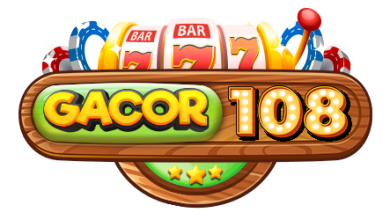Play for Profit: Gamification Platforms Drive Real Business Outcomes

Brands today compete fiercely for attention, action, and lasting loyalty. Traditional marketing often falls short in sustaining customer interest. Increasingly, brands are investing in gamification platforms to create interactive, rewarding experiences. These initiatives effectively engage, convert, and retain audiences.
The power behind these platforms is not merely technological. It is psychological. Gamification harnesses play, a fundamental human behavior. When strategically applied, play becomes a potent tool for business success.
The Enduring Psychology of Play
Play is universal. Adults engage in play daily, whether through puzzles, social games, or competitive workplace dynamics. According to esteemed psychologist Dr. Stuart Brown, play is essential for creativity, problem-solving, and emotional well-being. It ignites motivation and fosters exploration, learning, and connection.
Gamification taps into this innate inclination by integrating game elements such as points, challenges, levels, and rewards into non-game environments. When invited to play, customers become active participants in their own experience rather than passive observers. This shift from consumption to active involvement is critical. Behavioral science research indicates that interactive experiences stimulate dopamine release, generating positive feelings and increasing user likelihood to return. Simply put, when customers play, they stay.
Engagement That Feels Effortless
The most effective gamification platforms employ mechanics rooted in intrinsic motivation. They build systems that reward users not just for transactions, but for exploration, contribution, and consistent interaction. Examples include:
- Earning points for completing profile information
- Unlocking badges for writing reviews
- Completing daily challenges or quizzes
- Competing on leaderboards with other users
These activities appear simple yet hold deep psychological meaning. They establish clear goals, provide immediate feedback, and cultivate a sense of progression. These are all foundational principles of game design. This feeling of advancement is particularly compelling. When users can visualize their progress within a system, such as leveling up or achieving status, they are more likely to remain engaged.
From Engagement to Tangible Results
While gamification begins with fostering engagement, its true value lies in its capacity to drive measurable business outcomes. When users are involved in playful experiences, they spend more time with a brand, explore more offerings, and are more receptive to calls to action.
For instance, a gamified loyalty program might incentivize users to earn rewards for completing actions like referring friends, making repeat purchases, or sharing content on social media. Each of these behaviors directly supports conversion and overall growth. Furthermore, gamified environments can reduce friction. Rather than simply instructing a user to complete a form or checkout, brands can transform these steps into a challenge or reward opportunity. This approach not only reduces abandonment rates but also makes the experience more memorable.
Retention Through Positive Reinforcement
A primary challenge for any business involves not just attracting users, but retaining them. Gamification addresses this by creating compelling reasons for users to return. Whether through daily contests, discovery elements, or unlocking new content, well-designed platforms ensure sustained user interest.
This reinforcement is driven by the variable reward system, a concept pioneered by behavioral psychologist B.F. Skinner. When rewards are unpredictable, like a mystery prize or a limited-time bonus, they foster stronger habits and more enduring engagement. Many successful apps and digital platforms utilize this principle. Consider Duolingo’s streak counters, Starbucks’ points system, or Nike’s fitness challenges. Each employs game-like mechanics to build stickiness, encouraging frequent returns and sustained interaction.
Beyond eCommerce: Expanding the Power of Play
Gamification historically found its strongest foothold in eCommerce, driving impulse buys and loyalty in retail settings. However, its application is rapidly expanding. Increasingly, B2B companies are using gamified onboarding processes to improve software adoption rates and user proficiency. Financial institutions are deploying gamified apps to educate users on personal finance and encourage savings goals. Sports and entertainment brands are creating interactive fan experiences, from predicting game outcomes to unlocking exclusive digital content, deepening fan engagement and loyalty. This broader adoption underscores the universal appeal of play in driving desired behaviors across diverse industries.
Loyalty That Feels Earned
Modern loyalty transcends mere points or discounts. It centers on emotional connection. Gamification platforms help brands forge this connection by making customers feel recognized, valued, and empowered. Unlike generic rewards programs, gamified systems can tailor experiences based on individual user behavior. For example, a user consistently purchasing eco-friendly products might unlock a “Green Champion” badge and receive early access to sustainable collections. This targeted recognition builds affinity and signals that the brand genuinely understands and appreciates the customer’s preferences. Moreover, social features such as leaderboards and community challenges introduce elements of competition and camaraderie, transforming brand interaction into a shared experience that users are proud to embrace.
Purposeful Play
The effectiveness of gamification is not about superficial tactics. It involves crafting purposeful, user-centered experiences that leverage the psychology of play to achieve concrete business objectives. When executed effectively, gamification platforms do more than just increase clicks. They cultivate deeper customer relationships, enhance customer lifetime value, and transform casual users into dedicated advocates. Authenticity is paramount. The play experience must align with the brand’s core identity and genuinely enrich the user journey.
Conclusion
In a world of constant distractions and abundant choices, gamification offers a significant competitive advantage. It transforms routine interactions into moments of joy, motivation, and accomplishment. Crucially, it translates engagement directly into measurable business outcomes. The future of digital engagement is undeniably playful. For brands prepared to invest in gamification platforms, the message is clear: this is where play directly translates into profit.




